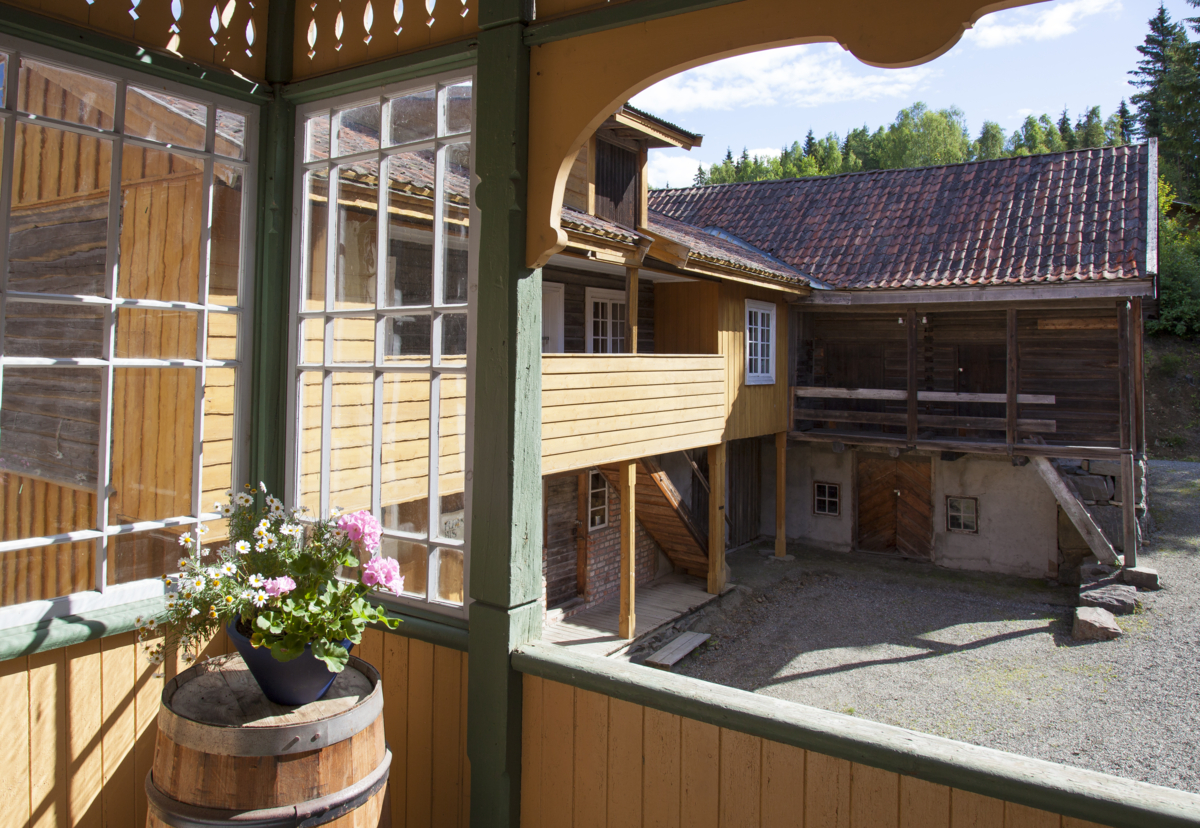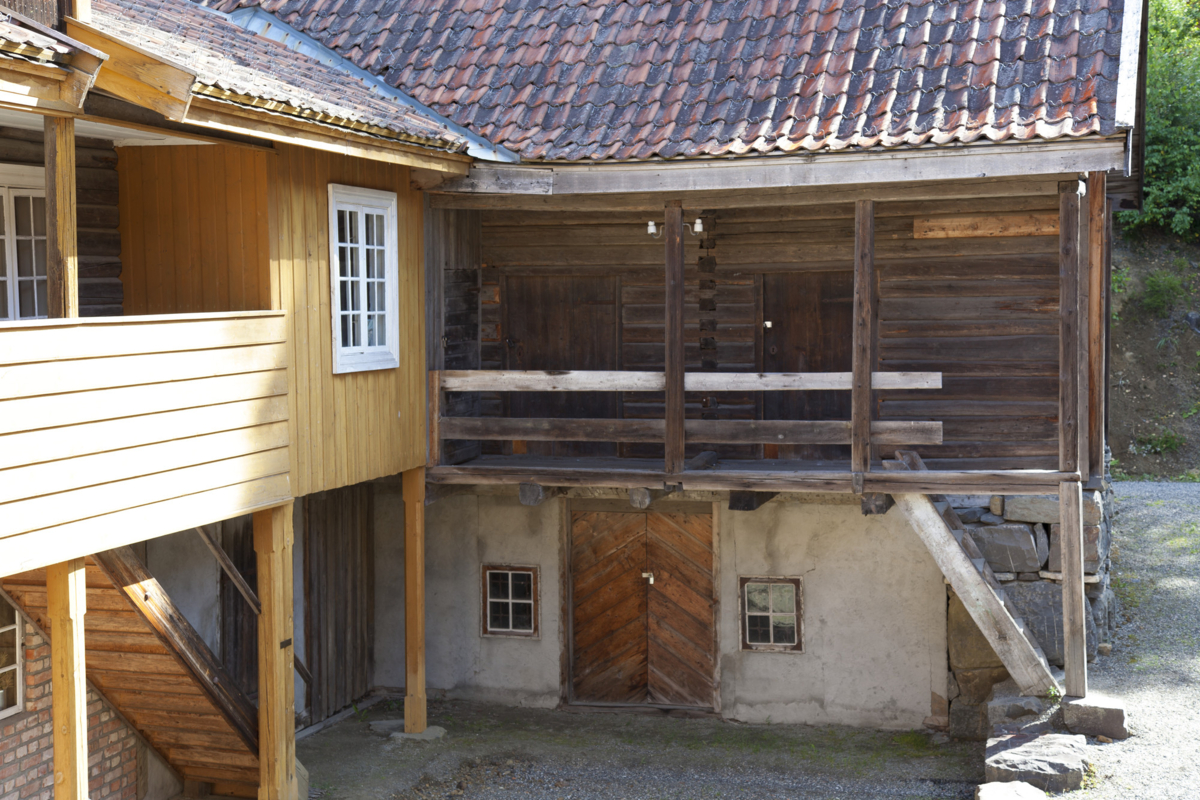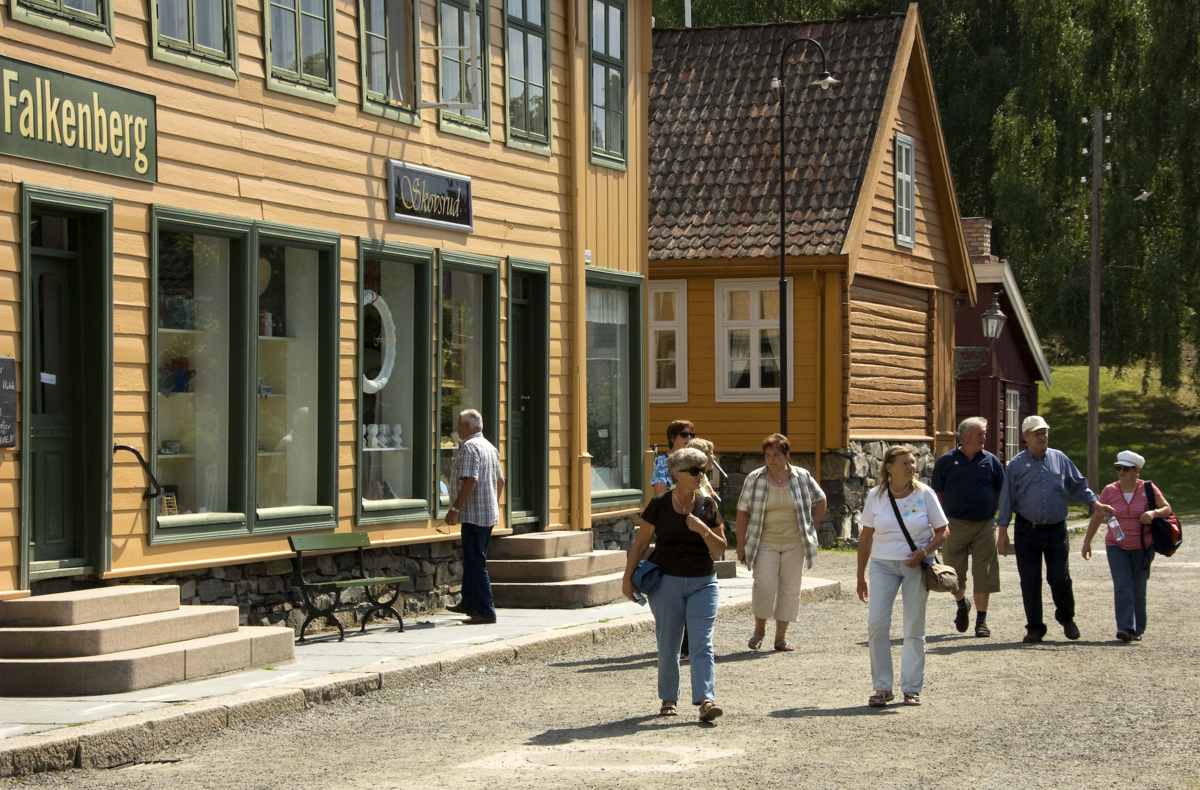
Photo: Audbjørn Rønning/Maihaugen
Julingården
A historical merchant's house and courtyard environment
Julingården is Maihaugen's historical merchant’s house, complete with business premises, a farmhouse room, and storage buildings in the courtyard. Today, Julingården is home to Falkenbergbutikken, Skovsrud's frame store, and I Rønning Manufaktur, offering visitors an authentic glimpse into past commerce.
Many craftsmen operated from buildings like this. Along the side street from Storgata, a photographer has his studio, and in the backyard, you’ll find the bookbinder's workshop. The name "Julingården" comes from its owner in the late 1800s, land surveyor Julin, who lived on the ground floor. The second floor was rented out to a young dentist, Anders Sandvig, who would later become the founder of Maihaugen. It was in this very building that he began his career as a collector in 1885.
At Maihaugen, the main building from Julingården has been complemented by courtyard buildings from two other urban properties, together recreating a typical courtyard environment from Lillehammer. The building was adapted to fit a street corner with an added extension featuring a chamfered corner, which was a requirement to ensure fire trucks could pass with their long ladders.





